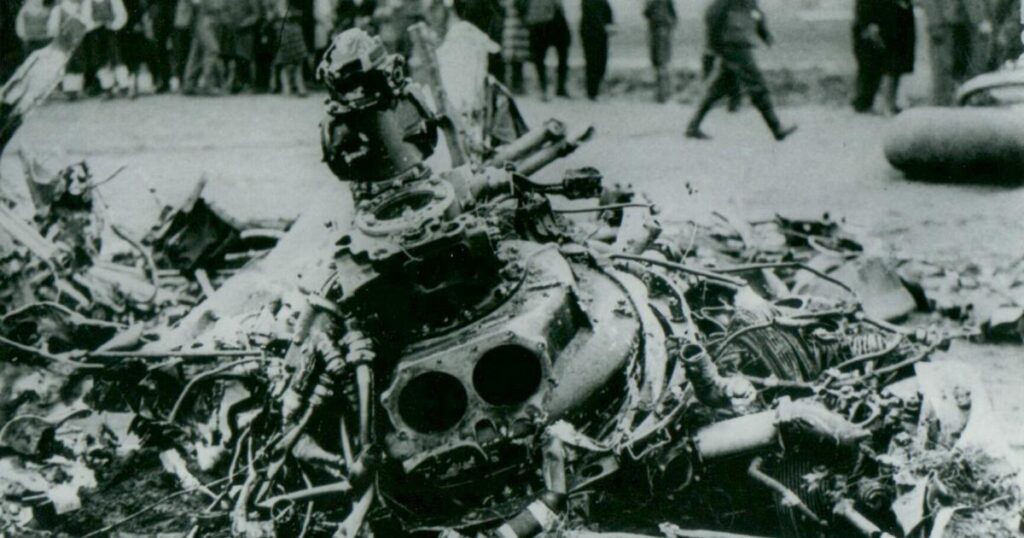Flt Sgt Kenneth Horace Tibbats, who came from Woodford Green, was piloting a Wellington bomber that was shot down over the small village of Maxdorf near Ludwigshafen, close to the Rhine in western Germany.
The search to trace his descendants is being carried out by war archaeologist Erik Wieman who has been researching Allied crash sites of the Second World War in Germany with the Archaeological Trust of Speyer.
“We have pinpointed the crash site of Flt Sgt Tibbats at the village,” he said.
“Distinct Wellington aircraft parts were first rerecovered. Now the crash site has been identified and is being excavated.
“We are trying to find Kenneth Tibbats’s descendants to tell them about our find. He was the pilot of the Wellington bomber R1789 that was shot down.”
The archaeological trust plans to erect a memorial at the excavation site in Maxdorf. Local German firms and sponsors are supporting the memorial project. It would be their tenth memorial at crash sites in Germany so far in the last 10 years.
“Our goal is to inform relatives and their descendants to make sure these historical sites and the names behind them are not forgotten,” Erik explained. “We plot forgotten sites and excavate them, then make contact with descendants of the crews and erect a memorial when our onsite work has finished.”
Many descendants of Allied air crews from Britain, Australia, New Zealand and the USA have already attended memorial services held by the archaeological trust over the past decade.
Flt Sgt Tibbats’s aircraft crashed on April 2, 1942, as the tide of the Second World War was turning. Hitler still thought he could win — but Nazi fortunes began to reverse with the defeat of German and Italian forces in North Africa by May the following year, just 13 months after Kenneth was killed.
Post-war German records from March 1948 show Kenneth Tibbats was buried at Durnbach British military cemetery south of Munich, near the Austrian border. He was just 19 years old.




